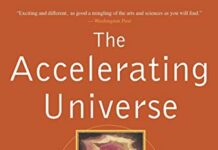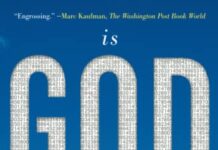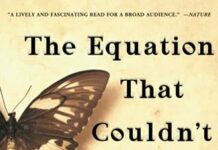
Ebook Info
- Published: 2008
- Number of pages: 303 pages
- Format: PDF
- File Size: 3.70 MB
- Authors: Mario Livio
Description
Throughout history, thinkers from mathematicians to theologians have pondered the mysterious relationship between numbers and the nature of reality. In this fascinating book, Mario Livio tells the tale of a number at the heart of that mystery: phi, or 1.6180339887…This curious mathematical relationship, widely known as “The Golden Ratio,” was discovered by Euclid more than two thousand years ago because of its crucial role in the construction of the pentagram, to which magical properties had been attributed. Since then it has shown a propensity to appear in the most astonishing variety of places, from mollusk shells, sunflower florets, and rose petals to the shape of the galaxy. Psychological studies have investigated whether the Golden Ratio is the most aesthetically pleasing proportion extant, and it has been asserted that the creators of the Pyramids and the Parthenon employed it. It is believed to feature in works of art from Leonardo da Vinci’s Mona Lisa to Salvador Dali’s The Sacrament of the Last Supper, and poets and composers have used it in their works. It has even been found to be connected to the behavior of the stock market! The Golden Ratio is a captivating journey through art and architecture, botany and biology, physics and mathematics. It tells the human story of numerous phi-fixated individuals, including the followers of Pythagoras who believed that this proportion revealed the hand of God; astronomer Johannes Kepler, who saw phi as the greatest treasure of geometry; such Renaissance thinkers as mathematician Leonardo Fibonacci of Pisa; and such masters of the modern world as Goethe, Cezanne, Bartok, and physicist Roger Penrose. Wherever his quest for the meaning of phi takes him, Mario Livio reveals the world as a place where order, beauty, and eternal mystery will always coexist.
User’s Reviews
Reviews from Amazon users which were colected at the time this book was published on the website:
⭐I had thought the Golden Ratio was simply the ideal aesthetic ratio between the length and the height of a painting or that of objects within a painting. According to Author Mario Livio, however, it has very little to do with the arts but a great deal to do with nature and the laws of physics, as well as some amazing abstract mathematical characteristics (discovered over the last several centuries). I believe the sub-title of the book is correct: it IS the world’s most astonishing number. In other words, though it does not in the author’s view have much to do with the Mona Lisa, the Parthenon, or the Pyramids, it does have some fascinating connections to nature, as well as numbers in the abstract, and their characteristics.Well, what is the Golden Ratio anyway? Basically, phi or the Golden Ratio is such that if you break a line AB into 2 parts by adding point C to make AC and CB, such that AC is greater than CB and AC/AB = AB/AC. I t sounds pretty boring, but it gets a lot better, since it is also the convergence of something called the Fibonacci Sequence, a set of numbers beginning with 0 such that any 2 consecutive numbers added together equals the next number in the sequence (0,1,1,2, 3, 5, 8, 13, etc.). The Fibonacci Sequence can also be proved to be the same as the continued fraction of all 1’s and also the convergence of the continuous nested square roots of 1’s. (You can look on the net to see what these expressions look like, both somehow very satisfying aesthetically). I was amazed that these connections could have been made at all with phi, and that the Fibonacci Sequence is the most irrational of all possible numbers; that is, it converges the most slowly to its final irrational value. Call me weird, but that just blew me away!I was most amazed that minds could think of these abstract things, and that the math connections to phi worked out so beautifully. Phi’s abstract qualities are, in my opinion, every bit as impressive as its connections to nature itself (galaxies, sunflowers, hurricanes, and more). How did they think this stuff up, and why does it fit together so well? Some of the more bizarre are as follows:The inverse of phi has the same numbers to the right of the decimal point as phi itself.The square root of phi also has the same numbers to the decimal point as phi.The sum of 10 consecutive Fibonacci numbers is = to the 7th number times 11.The unit digit of a given Fibonacci number occurs exactly every 60 numbers.All Fibonacci primes have prime subscripts (with the exception of 3).The product of the first and third Fibonacci numbers in a set of 3 consecutive Fibonacci numbers is within 1 of the 2nd number squared.Who would even think of looking into such things, and why does it work out so well?There were also a couple of tangential points that were really neat to me. How about the First Digit Phenomenon (Benford’s Law), that says if you have a random set of numbers, the probability of the first digit being a 1 is greater that it being a 2 is greater that it being a 3, and so on. How is that even possible in the real world? I’ll have to think about that one a little more. And how about proof for the irrationality of the square root of 2? This elegant little proof was worth the price of the book, at least for me. It is a derivation of something called reductio ad absurdum: you prove something is true by starting with the opposite assumption and taking it to its logical conclusion to prove it can’t be true.Finally, I was struck by a broader question raised by the Mario Livio: how is it that math can so concisely define the laws of nature (gravity, motion, etc.)? I don’t think that thought once crossed my mind throughout my high school and college careers in engineering! The book says that Kepler’s Third Law, for example, states that the square of a planet’s period divided by the cube of its semi-major axis is constant for all planets. How does that work out so well in such a brief, elegant formula, and how in the world did Kepler think of it? Are we talking Coincidence or Creator?I was a little let down by this book as far as art is concerned; Livio simply doesn’t believe it is a factor (except for a little 20th century art in the cubist genre perhaps). But I was surprisingly excited by some of the abstract characteristics of the Golden Ratio, and the minds that somehow put it all together. It was as exciting to me as seeing rare, beautiful, exotic creatures on a TV nature show.The Golden Ratio is a strange, beautiful, and rare bird indeed!
⭐http://www.amazon.com/kindleforandroid/Indeed this is also a most astonishing book telling the story of a number. In bibliographical terms this book is mathematics, or slightly more narrowly history of mathematics. Nota bene! The number is not the well-known Pi (3,14..), related with circle, but equally well-known, not as a number but as ratio of long and short edge of an ideal four corner surface. Everybody knows and has a conception of what is a Golden Ratio without ever thinking it as a number. At least I bumped to the number reading this book, first time in my over 75 years of life. The magic number is PHI (1,618), the ratio of the long side to short side of any Golden cut surface. What is so special about that innocent-looking number?Read this book and you will be astonished. As if the whole Universe would be planned on the basis of this magic number: all ‘natural’ dimensions fron snow-flakes to the form of galaxies, masterpieces of painting, sculpture and music have this Golden ratio as the basic measure of their inner proportions. We seek it instinctively everywhere and are disappointed, if we do not find it. As an example I am extremely irritated of the brute deviation from this ideal of the format of paper journals; in addition to being unpleasant looking, they also are clumsily flabby for holding in hands.Despite of presenting the innocent looking simple number Phi (with alternative formulas behind it) this book plunges right away to the deepest mysteries of mathematics referring to dozens, hundreds of authorities. And yet, you will have no difficulty reading and understanding the text. High level mathematics is usually thought as pages full of formulas and dissertations of 20 pages, which very few persons understand. This book is not that way, although it goes far beyond mathematics requiring technical knowledge and skills. Just that is the fascination of the book. Embracing structures from flowers to houses and galaxies you get a fantastic feeling of better understanding what you see. Also another very rare feature is included. The host of personalities contributing to this discovery of hidden secrets of our world view are presented on everyday grass root level. Such well-known as Pythagoras, Newton, Gauss, Kepler, Einstein along with many less known but very important geniuses. Believe or not you have the feeling of meeting and chatting with them personally. A real magician this Mario Livio, five stars without any hesitation. Grateful to my friend Viljo, class mate beyond 60 years, who introduced this author to me. Reading already a second Amazon book by Livio, about The Impossible Equation.
⭐Contains quite an array of facts, some quite tenuous, creating apparent links between things separated by sometimes thousands of years and thousands of miles. I have no problem with using imagination, but when this sinks to the level of propounding hypotheses that are patently ridiculous and “substantiated” by little more than flights of fancy, I become quite frustrated by myself trying to validate this nonsense. The basic theory of the golden ratio is great, but this book would have been worthwhile if the author had eliminated the mumbo jumbo, and written a book of possibly thirty or forty pages of actual fact.
⭐This book is fascinating. As an artist I was intetested in understanding the golden ratio as the claims it’s in so much work from Greek architecture to Da Vinci confused me. This book explains it all so well and also sparked an interest in maths again. I never much liked it at school but now I’m on my way to being a maths geek.
⭐A very good explanation of the history behind this number, although the mathematical explanations might have been simplified a little more, to introduce the calculations a little more clearly to the non-expert.
⭐Similar to the fook ‘Divine Proportion’ and equally enjoyable.
⭐Rarely has a book engrossed me so much.Well written, well structured, and easy to understand.Illuminating one of the many mysteries of our universe.
Keywords
Free Download The Golden Ratio: The Story of PHI, the World’s Most Astonishing Number in PDF format
The Golden Ratio: The Story of PHI, the World’s Most Astonishing Number PDF Free Download
Download The Golden Ratio: The Story of PHI, the World’s Most Astonishing Number 2008 PDF Free
The Golden Ratio: The Story of PHI, the World’s Most Astonishing Number 2008 PDF Free Download
Download The Golden Ratio: The Story of PHI, the World’s Most Astonishing Number PDF
Free Download Ebook The Golden Ratio: The Story of PHI, the World’s Most Astonishing Number




